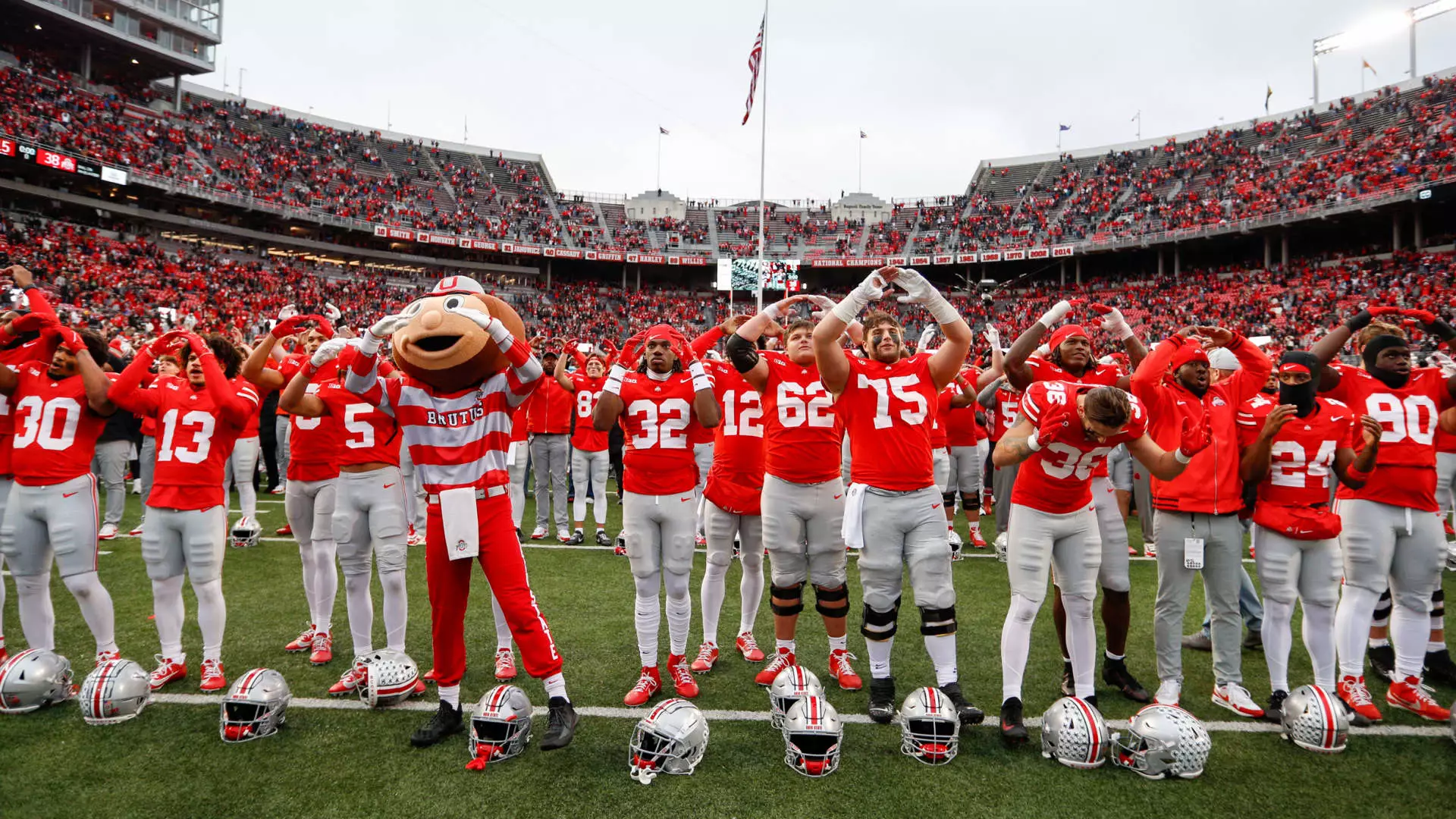College sports have transitioned from simple athletic competitions to multi-billion dollar enterprises, capturing the attention of private investors eager to secure a portion of this lucrative industry. With the staggering revenues generated by major college athletic programs, an essential question arises: what is the value of a college sports program? A recent analysis by CNBC sheds light on this inquiry, presenting a comprehensive ranking of the most valuable college athletic programs, specifically focusing on teams within the NCAA Football Bowl Subdivision (FBS).
The economic dynamics surrounding college sports have shifted dramatically in recent years, driven largely by lucrative media rights agreements, corporate sponsorships, and an ever-expanding fan base. The financial scale of college athletics is remarkable; for instance, Ohio State University emerged as the most valuable program, worth an estimated $1.27 billion. This dominant valuation can be attributed to a variety of factors including a robust alumni network exceeding 600,000 individuals, a staggering fan following of over 11 million, and significant financial contributions from boosters amounting to nearly $60 million. Additionally, the Ohio State football program boasts game attendance figures that regularly surpass 100,000, further enhancing its marketability and profitability.
It is no coincidence that the upper echelon of college athletic program valuations is heavily populated by members of the Southeastern Conference (SEC) and Big Ten Conference. The commanding presence these leagues exert in the college sports landscape can be attributed to their immense media rights deals, which provide a financial windfall for their member institutions. For example, the SEC boasts an aggregate value of $13.3 billion — an average of approximately $832 million per school. In close pursuit, the Big Ten follows with an aggregate value of $13.2 billion or an average of $734 million per school. Conversely, the Atlantic Coast Conference (ACC) and Big 12 represent the lower tier with aggregate valuations of $9.6 billion and $6.7 billion respectively.
The valuation figures referenced in the CNBC article are considerably supported through extensive research conducted by Jason Belzer, the publisher of AthleticDirectorU, who has used his expertise to guide universities through the complexities of name, image, and likeness (NIL) arrangements. This analysis leans on a thorough database of financial information pertaining to college athletics as sourced from the U.S. Department of Education’s Equity in Athletics Data Analysis and the Knight Commission on Intercollegiate Athletics, specifically for the fiscal year 2023.
The valuation estimates begin with a foundational revenue multiple of four for all participating institutions. From this baseline, adjustments are made based on critical variables such as the institution’s conference affiliation, anticipated NIL expenditures, institutional subsidies, and alumni engagement. These metrics not only inform current valuation but also signify potential for growth and increased profitability in the future.
To enhance the accuracy of its rankings, CNBC’s analysis tapped the insights of multiple experts well-versed in athletic program valuations. The participants, who remained anonymous, provided valuable context and guidance on determining the financial health of various programs. Acknowledging the sensitive nature of financial discussions in collegiate athletics, the collaboration underscores an increasing industry trend: the convergence of collegiate sports and private equity investment, suggesting a profound metamorphosis in how these athletic programs will be governed moving forward.
As college sports continue to evolve into major financial entities, understanding the true value of these programs becomes critical for prospective investors, school administrators, and fans alike. The insights gleaned from evaluations not only inform investment strategies but also guide universities in making decisions that can significantly impact their financial futures. With the backdrop of ongoing conversations around reform in college athletics, the intersection between education, sports, and economic strategy poses pressing questions for the future. The landscape of college sports will undoubtedly shift as investor interest grows, equipment for success becomes increasingly sophisticated, and the strategies to optimize revenue continue to unfold.

